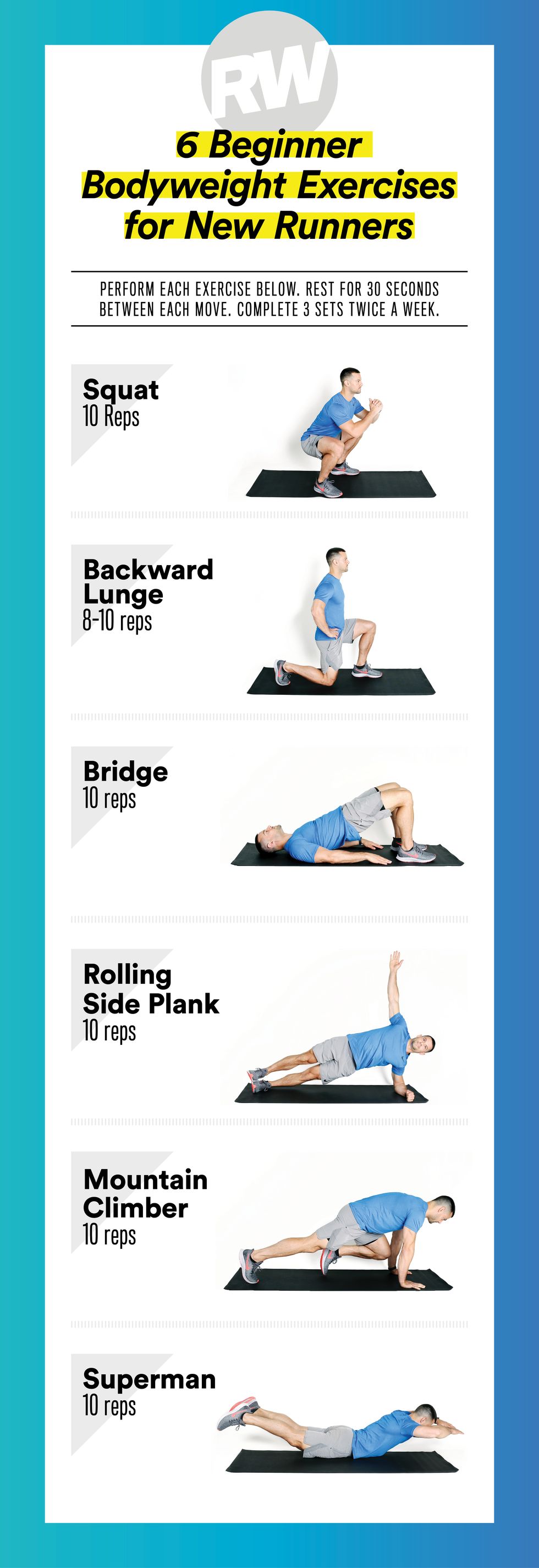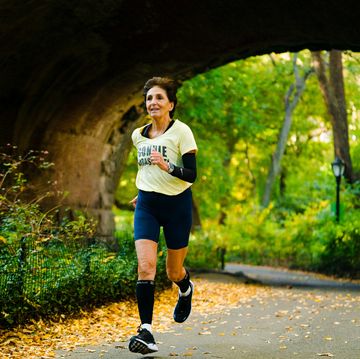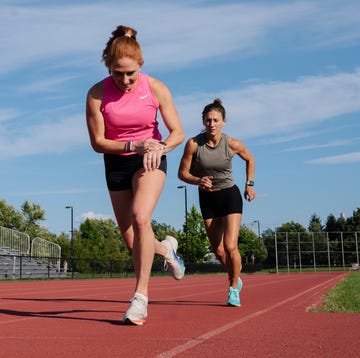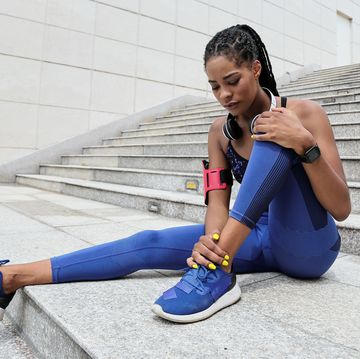As soon as you make running a habit (or even before you do!), it’s smart to establish a solid strength-training routine to support your run schedule. Adding strength training to your calendar can help you safely build up miles, while lowering your risk of injury. That’s because strength work can bolster your bones, muscles, and connective tissues, which preps your body for the high impact of running.
If you’re just starting out with strength workouts, it’s tough to know where to begin. So we put together a list of the best exercises for beginners, all key for runners in particular.
The benefit of these exercises for beginners in particular: They help you build strong, powerful, and injury-resistant muscles to power up hills, sprint across the finish, and maintain good running form mile after mile. But they also require no equipment, so you can do them anytime, anywhere.
How to Get Started With Strength Exercises
When you first start out with strength training, it’s best to start using your bodyweight as the resistance, before adding in more weight via dumbbells, kettlebells, or even resistance bands. This helps you nail down the form of each move first, before you make it more challenging by adding load.
Start adding these moves into your schedule twice a week and keep that consistent for a few weeks. Then, add another day of strength training to your schedule to ramp it up. Depending on how often you run, you can do strength training on a cross-training day (when you’re not running), or pair it with a run workout day, making sure to leave a few hours between your run and your strength session.
As you get stronger, work your way from eight to 10 reps to 12 to 15 reps. And when you’re comfortable with that, grab those weights. You can also increase the challenge by following our trainer tips for each exercise below.
The 6 Best Exercises for Beginners
How to use this list: Perform each exercise below for the specified number of reps. Mat Forzaglia, certified personal trainer, strength coach, and running coach, demonstrates them so you can learn proper form.
Follow the exercises below in order, performing the number of reps and sets described. Rest as needed between each exercise and set, making sure you feel truly rested (breathing back to normal and heart rate returned to baseline) before moving on to the next exercise or set.
You don’t need any equipment for these exercises, but an exercise mat will make them more comfortable.
1. Squat
- Stand with feet shoulder-width apart, hands clasped at chest.
- Send hips back and down, and bend knees to lower into a squat until thighs are about parallel to the floor. Keep chest lifted.
- Press through feet to stand back up.
- Repeat. Do 3 sets of 10 reps.
Make it harder: Add weight to the move, by holding one dumbbell or kettlebell at your chest with both hands. Or turn it into a jump squat by exploding up as high as you can and land softly between each rep.
2. Reverse Lunge
- Start standing with hands on hips, feet hip-width apart.
- Take a big step back with right foot and bend both knees 90 degrees. Keep left knee over left ankle and chest lifted. Back right knee should hover just above the floor.
- Press through left foot to stand back up.
- Repeat on other leg.
- Continue alternating for 8-10 reps per side.
Make it harder: Hold a weight in each hand, down by sides or try a jump lunge. Between each lunge, explode into the air, swinging your arms forward and switching your legs in midair like scissors. Land in a lunge with your opposite leg forward.
3. Glute Bridge
- Lie faceup on a mat with knees bent, arms at sides, palms down.
- Draw belly button in toward spine, and press into heels to lift hips up off mat. Engage core, glutes, and hamstrings to keep hips level; don’t let one side dip.
- Hold for 3 to 5 seconds.
- Lower hips back down to floor.
- Repeat. Do 3 sets of 10 reps.
Make it harder: Try a single-leg bridge. Start in the same position, but extend your left leg straight off the floor, keeping both knees in line. Drive through the right heel to lift hips and glutes off the mat. Make sure to repeat on the other leg.
4. Rolling Side Plank
- Start in a plank with forearms on mat, shoulders directly over elbows, but forearms perpendicular to body. Engage core so body forms a straight line from heels to shoulders. Don’t let hips dip or pike. Keep back flat.
- Shift weight to left arm as you rotate to the right and extend right arm straight up.
- Rotate back to forearm plank.
- Repeat for 10 reps.
- Then switch sides.
Make it easier: Start with a basic forearm plank to build core and shoulder strength, then progress to a basic side plank. When you can hold that for 60 seconds, add in this rolling variation.
5. Mountain Climber
- Start in a high plank position, wrists under shoulders, core engaged, so body forms a straight line from head to heels.
- Bring right knee in toward chest, then return to plank.
- Bring left knee in toward chest, then return to plank. That’s 1 rep.
- Continue alternating while maintaining a solid plank; don’t change lower back posture as you move legs. Do 3 sets of 10 reps.
Make it harder: Alternate legs as fast as possible and continue to increase your speed. You can also add a looped resistance band around the feet to increase the challenge on your core and hip flexors.
6. Superman
- Lie facedown on a mat, legs extended, forehead resting on hands with elbows bent so neck is not strained.
- Lift head, chest, and legs as high as possible.
- Hold for 3 seconds, then lower back down.
- Repeat. Do 3 sets of 10 reps.
Make it easier: Lift right arm and left leg. Then lift left arm and right leg. Continue alternating.
Make it harder: When you lift up into superman with arms extended, hold and pull the elbows down toward sides for a lat pull. Extend your arms back out, and then lower back down.
Images by: Julia Hembree Smith

A running veteran for more than a decade, Movold is a licensed strength and running coach for Runner’s World+ members and at the Mile High Run Club in New York City. When she’s not motivating class-goers through grueling treadmill workouts, you’ll likely find her zig-zagging boroughs on bridges throughout Brooklyn and Manhattan or training for her next marathon . She’s ready to push you to your next running goal as she chases her own—running a marathon in under 3 hours.




















